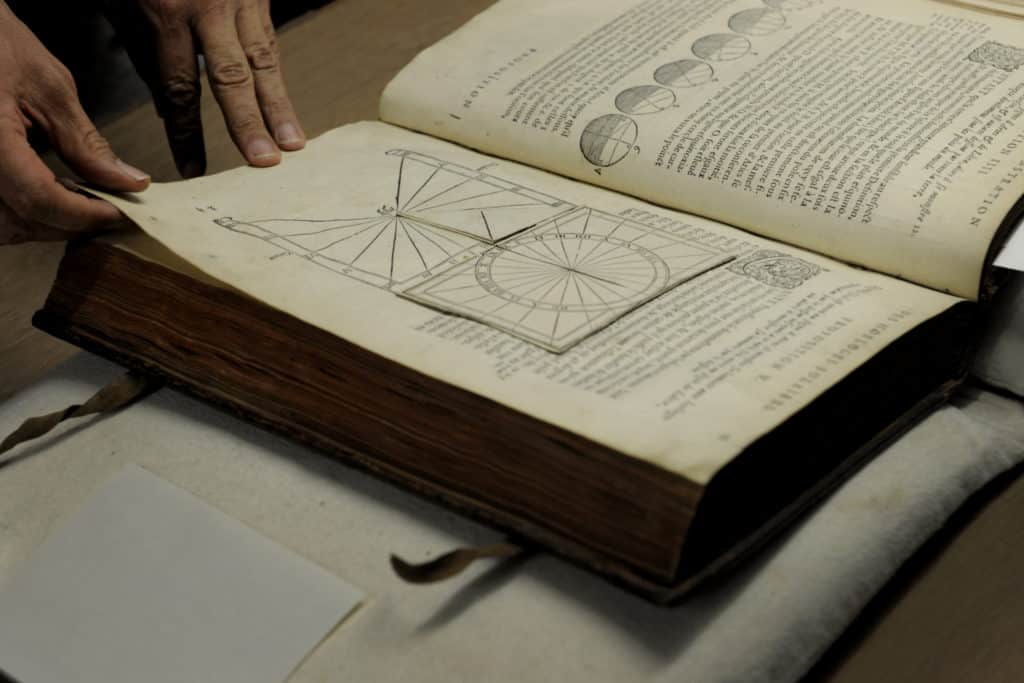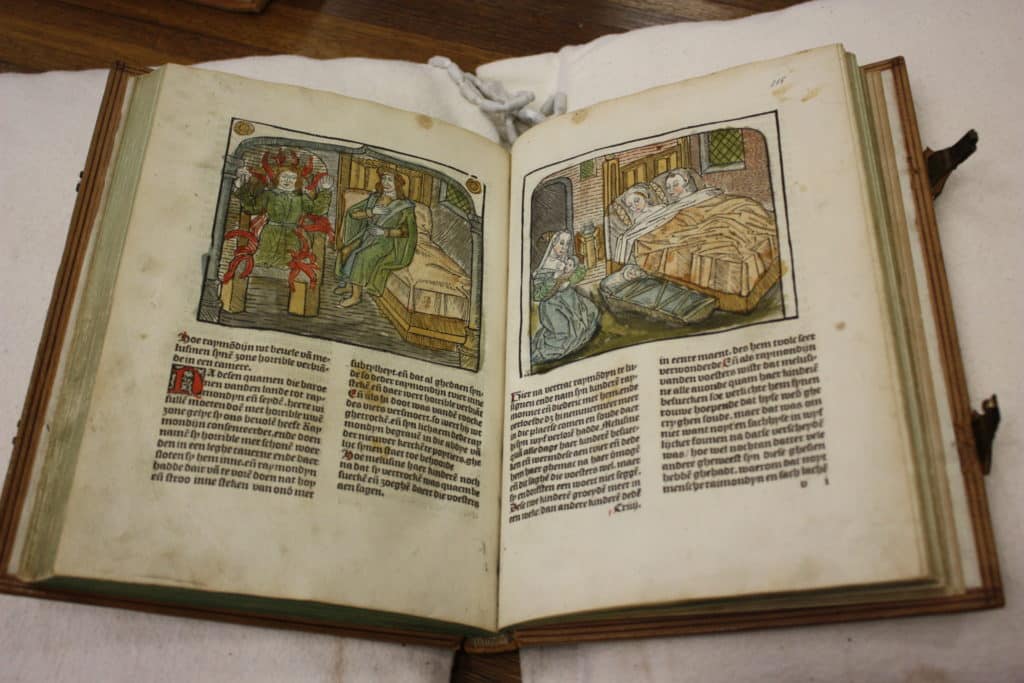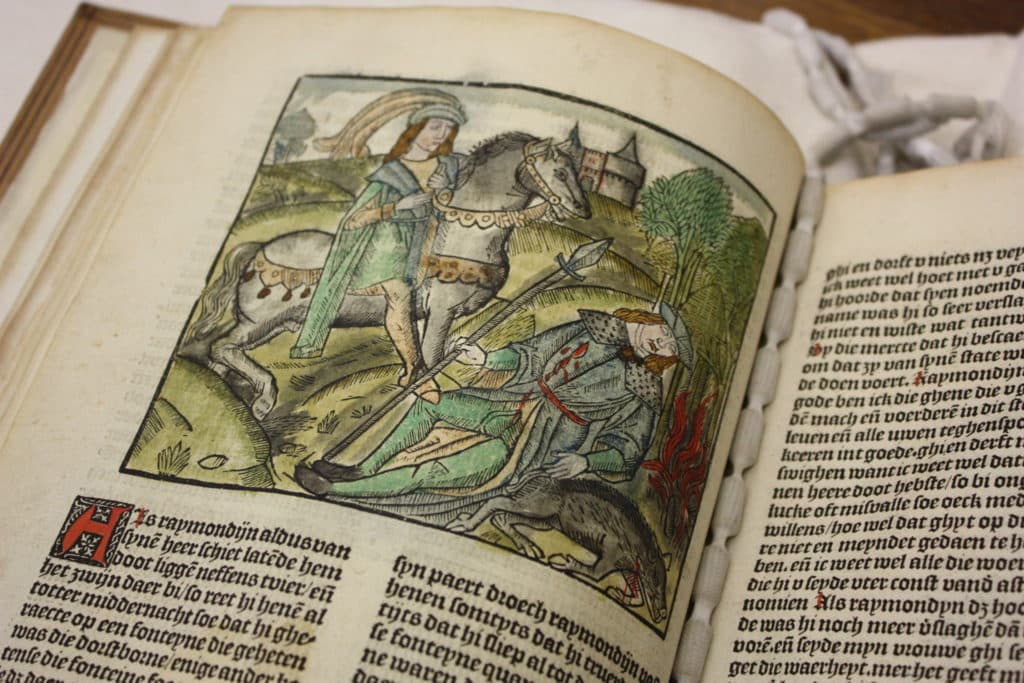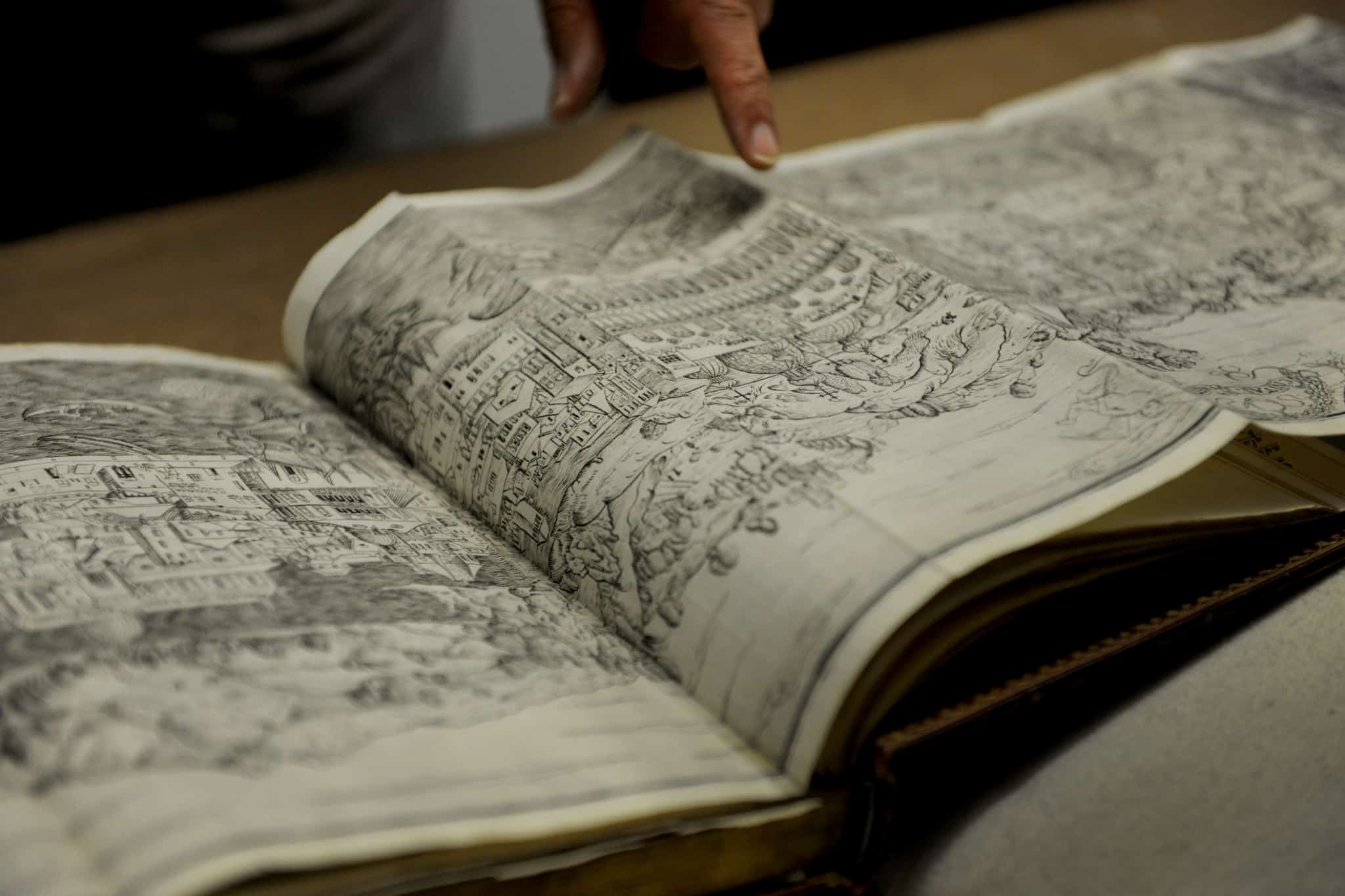Important information
- Please reserve rare books 2 working days in advance.
- You can consult them in the General reading room. Seat reservation is required.
The collection
Since 2007, old books (dating from before 1830) are held at the Rare Books Department.
Currently, the Department houses approximately 282,000 printed volumes, including:
- more than 3,200 incunabula (books printed before 1501)
- 30,000 Brussels editions dating from the Ancien Régime
- Belgian and foreign printed works dating from before 1830
- a selection of curious books dated later than 1830
The collection also contains contemporary, bibliophile and precious editions that are acquired each year through the Legal Deposit.



Searching the collection
Most of the books held by the Rare Books Department are (retro)catalogued in the online catalogue; in fact, all books acquired, donated or left to the library later than 1985 are listed in it. You can search in the catalogue by origin, bookbinder or the name to whom the book is dedicated.
It is still useful to consult the main card catalogue of the General Reading Room for the collections that were acquired before or in 1984.
Moreover, printed catalogues for some of the collections have been published: Van Hulthem, Fétis, Count de Launoit, Ms Louis Solvay, Nyssen, Van Bogaert.
Printed catalogues and thematic repertories are also available in the Rare Books reading room:
- Polain (15th century printed works),
- Nijhoff-Kronenberg (Belgian printed works, 1501-1540),
- Belgica Typographica (Belgian printed works, 1541-1600),
- Bibliotheca Belgica (ancient Belgian authors and printed works),
- Bibliotheca Erasmiana Bruxellensis (works by Erasmus),
- Bibliotheca Lipsiana Bruxellensis (works by Justus Lipsius),
- Blogie (repertories of the catalogues of book auctions)etc.
You can execute multiple and cross-referenced searches in all of these collections.
You can do more detailed, thematic searches in the reading room using the card catalogues, which are arranged by author and title, subject, printer, illustrator, bookbinder, origin, etc. Please note: these thematic card catalogues are only available for part of the Rare Books collection.
Important subcollections
All academic fields can be found in this department. The most important subcollections include:
- the Karel Van Hulthem Collection (VH) and the City of Brussels Collection (VB)
- encyclopaedias, the section containing incunabula (INC)
- the books on medicine and natural sciences belonging to Johann Müller (Müller)
- the ancient printed works belonging to the library of François-Joseph Fétis (Fétis)
- the Faber theatre collection (Faber)
- the acquisitions of the Rare Books Department (LP)
- the sections containing almanacs (ALM)
- Count de Launoit’s Voltaire collection (FS)
- the collection of bindings, old and modern books collected by Mrs. Louis Solvay (FS IX)
- the literary library of Baron van Bogaert (FS XXXV)
- a total of more than 1,000 ancient Japanese books collected by Hans de Winiwarter (FS XLI)
- the library of the surrealist writer Louis Scutenaire (FS XLIX)
- the collection of Ms Léon Courtin (FS LXIII)
History of the Department
The Department – called ‘Precious Printed Works’ at the time – was founded in 1945. The first curator, Franz Schauwers, transferred all old and rare modern and precious printed books, selected by means of a variety of criteria, from the main collections. He made a systematic selection of books from the following categories and brought them together in the new department:
- all books printed before or in 1540,
- all books printed in Belgium before or in 1600,
- all books printed in Great Britain before or in 1640.
Any books dating from the period after the dates above were selected for the rarity of the editions, their illustrations or their remarkable origins.
By these means, it only took him a few years to build up a department of about 50,000 volumes. The department continued to expand and in 2007 it was renamed the Rare Books Department.
